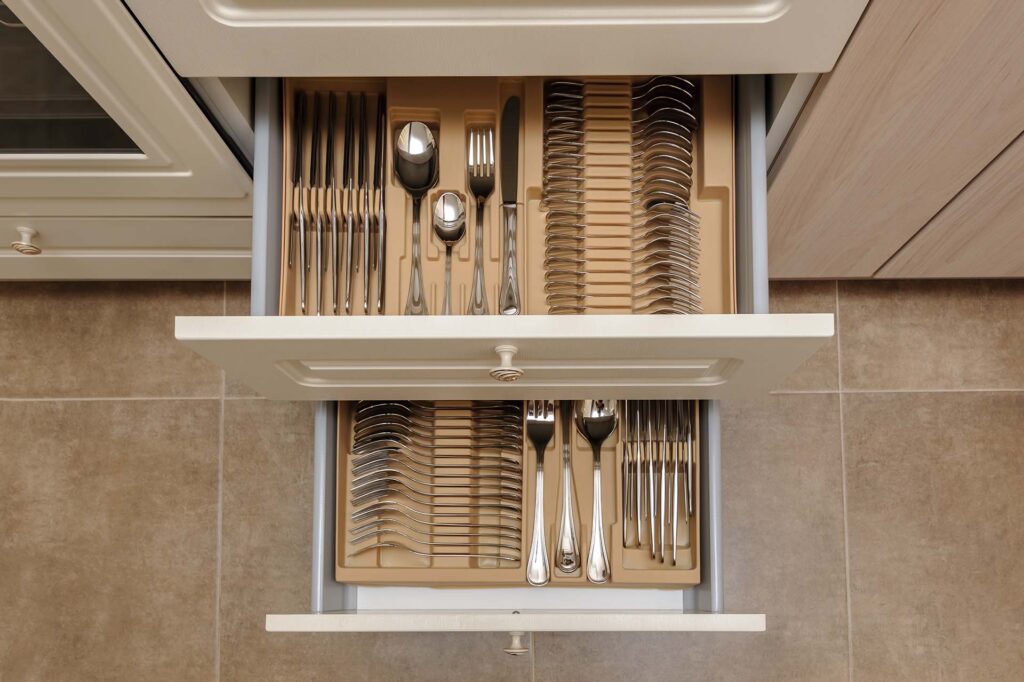Preparing for a big move? Learning how to do a home inventory is essential for a stress-free transition. This guide simplifies the process, offering comprehensive advice on how to inventory your home efficiently. Whether you’re a relocation newbie or a seasoned pro, here you’ll find valuable insights for a safe and seamless cross-country transition.


When planning a move to another city, you will find out that making an inventory list is crucial for the successful organization of your relocation. Start by categorizing your belongings and using digital tools for easy tracking. Detailed descriptions of each item are key.
Don’t forget to pay special attention to valuable items and keep multiple copies of your list. Involve family members for added efficiency and ensure your insurance coverage is up to date for the move. Moreover, a comprehensive household inventory checklist can streamline the process of hiring cross-country movers. It enables accurate quotes and ensures all items are handled appropriately during the transition.
This process not only helps in keeping track of your belongings throughout the shipping process but also makes your relocation efficient. A well-prepared chart serves as a roadmap. It provides a clear picture of what you own, making the relocation less stressful and more manageable.
Creating this list offers numerous relocation benefits. Firstly, it enhances organization, allowing you to keep a detailed record of your belongings. This organized approach also aids in unpacking and setting up your new home efficiently.
Secondly, for insurance purposes, a comprehensive record ensures you have accurate records, which is crucial in case of loss or damage during transition. Lastly, this process provides peace of mind. Knowing that every item is accounted for and documented can significantly reduce the anxiety about moving out.
Long-distance relocations come with unique challenges, such as the risk of items being lost, damaged, or even forgotten. A thorough record can mitigate many of these relocation mistakes.
It helps in tracking your possessions and identifying any missing or damaged items upon arrival. For items requiring special handling or insurance, a detailed list ensures they receive the attention they need.

Starting well in advance allows you to catalog each item without the pressure of looming deadlines. This process involves systematically going through each room, listing and photographing every item, and noting important details like condition, value, and any unique identifiers. An early start also provides ample time for revisions and updates, ensuring that your list is as accurate and comprehensive as possible.
Having the right tools at your disposal is critical for a stress-free relocation process. The right supplies can simplify the task, making packing more efficient and accurate.
A well-thought-through process ensures that no detail or item is overlooked and that your records are easily accessible. So, to begin this process, gather a few essential materials:

To effectively manage this stage, begin at one end of your home and move methodically to the other. This ensures no area is overlooked. Use a relocation checklist for each room and note down items as you go.
Include items such as your furniture, electronics, décor, and other belongings. For each item, record its condition, purchase date, and approximate value. This structured method provides clarity and helps maintain focus throughout the process.
These spaces often contain a mix of electronics, furniture, and decorative pieces. Start with larger items like sofas and dining tables, then move to smaller items like lamps and artworks.
Document each item’s condition, brand, and other relevant details. Remember to open cabinets and storage units to note down possessions inside as well. This thorough approach ensures all items in your living spaces are accounted for.
Moving to the bedrooms, focus on personal belongings. Document clothing, ensuring that special or valuable pieces are noted separately. Include beds, night tables, and personal items like books and jewelry.
For wardrobes, you can categorize clothes by type for easier listing. However, don’t overlook items stored under beds or in closets. Even take the opportunity to look through those and decide what is truly worth keeping. Items that have been collecting dust for too long can be sold or donated to charities such as Goodwill and The Salvation Army.
Conclude this adventure with the kitchen. Catalog appliances first, noting their make, model, and condition. Then, move to utensils, cookware, and other kitchenware. Open all drawers and cabinets, making sure every item is listed. For sets like dinnerware, you can note the set as one entry with the number of items it has.

Fragile items need to be packed with special attention to ensure their safety. Start by identifying items that are breakable or delicate, such as glassware, artwork, and electronics.
Use detailed descriptions and take multiple photographs from different angles. For storing, invest in quality packing materials such as bubble wrap, foam peanuts, clean paper, and sturdy boxes. Label these boxes as “Fragile” to alert movers to handle them with extra caution.
When it comes to high-value pieces such as antiques, jewelry, and collectibles, documentation is key. Record each item’s current condition, original purchase price, and any appraisals you have.
It’s advisable to have updated appraisals for these items, especially for insurance purposes. Take clear, high-quality photographs, and consider storing these items in a safe or secure location until the relocation. For added security, you might want to transport these items personally.

Modern tools and apps are designed to streamline inventory management, making it more manageable and less time-consuming. These digital solutions allow for easy updating and offer features like cloud syncing, barcode scanning, and photo attachments.
Look for apps that allow you to create itemized lists, categorize belongings by room, and attach photos and descriptions to each entry. Some apps even offer features like export options. This can be helpful for insurance purposes or when coordinating with your long-distance moving company.
No matter if you prefer a simple spreadsheet or a more advanced app with additional features, choose a platform that is user-friendly and meets your specific needs.
According to the Zapier website, these are some of the best apps for making spreadsheets:
Utilize cloud storage services to ensure your data is accessible from anywhere and protected against loss. Regularly update your backups, especially after making significant changes or additions to your list.
Additionally, consider having a backup on an external hard drive or flash drive. This is a common practice in digital storage and backup, as it safeguards your info against unforeseen circumstances.

An accurate home inventory plays a crucial role when hiring moving companies, as it directly influences the formation of moving quotes. Movers typically base their pricing on the list provided by you, detailing the number and type of items being relocated.
It helps in estimating the amount of packing material needed, the size of the moving truck, and the overall labor required. An exhaustive and precise record ensures that the quote is as accurate as possible, avoiding unexpected costs or shortages in resources on the moving day.
At Trico Long Distance Movers, for example, professional packing services are tailored according to the number of boxes to be relocated. We offer partial options for up to 15 boxes, with any number beyond that falling under full-service packing. This approach emphasizes the importance of a well-documented inventory, enabling our movers to provide the most efficient and cost-effective service.
One significant advantage of booking comprehensive services from Trico Long Distance Movers is the flexibility offered in managing your list. You have the option to review and update your inventory up to one working day before your relocation.
This flexibility in our long-distance moving services is especially beneficial for accommodating last-minute changes. It ensures that the moving plan remains accurate and tailored to your current needs, ultimately contributing to a smoother and more efficient relocation experience.

Relocating can often feel overwhelming, with noting down all of your possessions being a time-consuming yet crucial part of the process. However, when executed correctly and with the assistance of professionals, this process can transform into a manageable, even enjoyable journey.
At Trico Long Distance Movers, we are dedicated to making this whole experience a memorable one. Our commitment ensures that every item, regardless of its size or value, is given the attention and care it deserves. So, don’t hesitate to reach out to us. Book our assistance in advance, create your detailed home inventory, and let us take care of the rest.
The time required can vary depending on the size of your home and the number of belongings. For a small to medium-sized home, start at least two to three weeks before your move.
Larger homes or those with extensive collections may require a month or more. Begin by dedicating a few hours each day to note down different areas, allowing for breaks to avoid fatigue.
Ideally, revise it annually or whenever you make significant purchases, sell items, or undergo lifestyle changes. Updating your list is also crucial after any major event, like a renovation or the acquisition of valuable items.
It serves as a comprehensive record of your belongings, including their condition prior to the move. In case of loss, damage, or theft during the move, it provides proof of your items and their value, simplifying the claims process. Ensure that your list includes descriptions, photos, and, if possible, receipts or appraisals of valuable items.